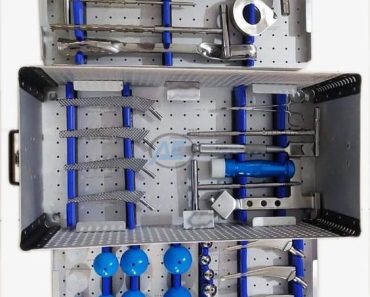
The evolution of car steering systems reflects the broader advancements in automotive technology and engineering. From the rudimentary manual steering mechanisms of early automobiles to the sophisticated power steering systems of today, the development of steering parts has been pivotal in enhancing driving comfort, safety, and performance. This essay explores the transition from manual to power steering, highlighting the innovations, benefits, and impact on modern vehicles.
Early Manual Steering Systems
The earliest automobiles, such as the Benz car steering parts Patent-Motorwagen of 1886, featured manual steering systems that were simple but labor-intensive. These early systems used a steering wheel connected to the front wheels via a mechanical linkage, typically comprising a system of gears and rods. The steering wheel’s rotation would directly influence the direction of the wheels. However, manual steering systems required significant physical effort, especially at low speeds and when maneuvering in tight spaces.
The steering mechanism of these early vehicles was relatively straightforward, consisting of a steering column, pitman arm, and tie rods. The driver would need to exert considerable force to turn the wheels, which was manageable at high speeds but cumbersome and tiring in city driving conditions. The mechanical linkages were prone to wear and required regular maintenance to ensure proper functioning.
The Introduction of Power Steering
The mid-20th century marked a significant shift in automotive technology with the introduction of power steering systems. The first power steering system was developed by General Motors and appeared in the 1951 Chrysler Imperial. This revolutionary technology used hydraulic assistance to reduce the physical effort required to steer the vehicle. The basic principle involved using a hydraulic pump driven by the engine to assist the driver in turning the steering wheel.
Power steering systems represented a major leap forward in driving ease and comfort. By reducing the amount of effort needed to steer, these systems made driving less strenuous, particularly at low speeds and during parking maneuvers. The hydraulic pump provided additional force, making it easier for the driver to turn the wheels. This advancement not only improved driver comfort but also contributed to enhanced vehicle control and safety.
Advancements in Power Steering Technology
Over the decades, power steering technology continued to evolve. The initial hydraulic systems were gradually supplemented with electronic components, leading to the development of electric power steering (EPS). Unlike hydraulic systems, EPS uses an electric motor to assist steering. This innovation allowed for more precise control and better fuel efficiency, as the system only consumed power when steering assistance was needed.
Electric power steering systems offer several advantages over their hydraulic counterparts. They are lighter and more compact, which contributes to improved fuel efficiency and vehicle handling. Additionally, EPS systems can be fine-tuned to provide different levels of steering assistance based on driving conditions, enhancing overall driving dynamics. For instance, modern EPS systems can offer greater steering assistance at low speeds for easy maneuvering and reduced assistance at higher speeds for better road feel and stability.
The Integration of Advanced Steering Technologies
Recent advancements have introduced even more sophisticated steering technologies. One notable development is the steer-by-wire system, which eliminates the physical connection between the steering wheel and the wheels entirely. Instead, electronic sensors, motors, and actuators handle the steering input. This technology allows for greater flexibility in vehicle design and the potential for advanced driver assistance systems (ADAS) integration.
Steer-by-wire systems offer several benefits, including reduced weight and more precise control. They enable the possibility of unique steering configurations and enhance the potential for autonomous driving technologies. By removing the traditional mechanical linkages, these systems also allow for greater customization of the steering experience, providing drivers with options to adjust steering responsiveness and feedback according to their preferences.
Impact on Modern Vehicles
The evolution of steering systems has had a profound impact on modern vehicles. Power steering, in both hydraulic and electric forms, has significantly improved the driving experience by reducing physical strain and enhancing control. These advancements have made driving more accessible to a broader range of people and have contributed to overall road safety.
Moreover, the integration of advanced steering technologies aligns with the ongoing trend towards greater vehicle automation and connectivity. Modern steering systems are increasingly integrated with other vehicle technologies, such as lane-keeping assist and adaptive cruise control. These systems work together to provide a safer and more enjoyable driving experience, paving the way for future developments in automotive technology.
Conclusion
The evolution of car steering parts from manual systems to advanced power steering technologies reflects the broader trends in automotive innovation. From the labor-intensive manual steering mechanisms of early automobiles to the sophisticated electric and steer-by-wire systems of today, each advancement has contributed to improved driving comfort, safety, and performance. As technology continues to advance, the future of steering systems promises even greater enhancements, further transforming the way we interact with our vehicles and shaping the future of driving.





